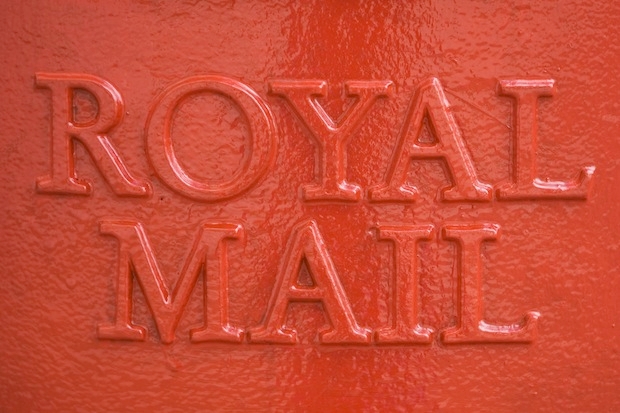Royal Mail delivers to 29 million UK addresses; last year it generated £9 billion of revenues, of which £324 million remained as profit before tax; and it is likely to be valued at £3 billion in its privatisation share sale, indicating a price-earnings ratio modestly below ten.
Twitter — the microblogging phenomenon beloved of self-admiring celebs, but now so ubiquitous as a mode of communication that it is compulsory for British ambassadors abroad — has 200 million users and is expected to generate revenues of just £365 million this year, maybe twice that next year. Twitter says it’s profitable but has so far kept its accounts private, and is nevertheless likely to be valued at £6 billion-plus in its forthcoming flotation. Its ratio of price to revenues (rather than price to earnings, which can’t be calculated without seeing the accounts) will thus be 60 times that of Royal Mail — but apparently looks conservative to seasoned punters in digital offerings.
To give you a little more perspective, the social network LinkedIn has a market value of £18 billion and trades on a price-earnings ratio north of 900. And Facebook, whose shares plunged after it came to market last year but have climbed back, is worth four LinkedIns but only a third of a Google; it currently trades at 200 times earnings.
That’s quite enough numbers for one column, but what it shows us is that the pricing of digital stocks is bonkers, based as it is on finger-in-the-air projections of growth in user numbers and revenues, and ignoring the probability, illuminated by Myspace and Bebo, that what’s hot today will be wiped out by what’s new tomorrow. It is commonly said that if Facebook’s billion users were a country, it would rank just behind China and India. But so what, if digital populations migrate en masse and at will?
And where does all this leave Royal Mail — with its Victorian business model, Luddite unions, fat-cat bosses, falling reputation and foreign competitors? No wonder its shares are priced like chipped plates at a car-boot sale, you might think. But hold on.
The handwritten letter is dead, but we’re always going to need door-to-door delivery services, especially for parcels, and this one has a trusted brand and a physical infrastructure second to none. It is better run than it used to be but has plenty of room for improvement, which means it should become more profitable in years to come; and it is offering investors a decent dividend from the start. Would you put money on Twitter to be in the same market position or better in a decade’s time? Neither would I, but for all its faults I’d take that bet on Royal Mail.
Let’s stay small, Bob
Good to hear from my old sparring partner Bob Diamond, who has been a bit elusive since he was forced out of Barclays last summer. To mark the fifth anniversary of Lehman Brothers’ collapse — out of which he snatched a brilliant deal for Barclays, though his successors may no longer see it that way — he has been writing in the FT about the inadequacy of banking regulators’ attempts ‘to end the “too big to fail” problem’. Progress has been made, he opines (in a scholarly tone that doesn’t sound at all like battling Bob) in reducing bank leverage and improving consumer protection. But we still don’t have a ‘global resolution regime’ capable of dealing with a financial giant that falls over. Well, you’re right, Bob, but perhaps you haven’t reached a point on your personal journey where you can admit that we never needed financial giants in the first place. What we need are smaller banks, more of them, stronger balance sheets, more specialised skills, and more sensible people in charge. Still, it’s good to have you back in the debate — and if you feel it’s time to fund the Diamond Institute for Better Banking, my offer to be your first director still stands. But let’s set an example and keep it small.
A word from the commissar
Last week I mentioned the BBC notion of ‘balance’: providing airtime for union spokesmen to talk down positive business stories. I had in mind the Beeb’s north-east newsroom, which often seems to be broadcasting from 1978 — but Radio 4’s Today programme promptly obliged with a perfect example. Having given business minister Michael Fallon a relatively gentle grilling on the Royal Mail privatisation just before 8 a.m. last Thursday, Sarah Montague handed over to ‘Phil with the weather’, only to interrupt him a moment later: ‘Sorry Phil, I should have said we were hoping and expecting to speak to the Communications Workers Union, and we’re still hoping…’ When Phil reached the end of his forecast, she interjected again: ‘Sorry about that, I was getting yelled at for not doing my job.’ Perhaps a BBC mole will name the commissar who was doing the yelling.
A triumph of boffinry
More positively, I also mentioned Jaguar Land Rover’s £1.5 billion investment in a new generation of aluminium-framed cars — which is an even better story than I first thought, because the breakthrough behind the use of aluminium in stress-bearing components turns out to be the work of a small Basingstoke engineering firm founded by a father and son, Bernard and Neil Collins. Composite Metal Technologies began with a licence to commercialise an aluminium casting process developed by the Ministry of Defence, improved on it over a decade of research, and finally patented a new way of bonding aluminium and woven alumina fibre to create ‘Continuous Fibre Reinforced Aluminium Matrix Composites’.
These materials have the strength and stiffness of steel but only half the weight, and their potential for automotive, aerospace and other industrial uses have long been recognised. But I’m told CMT is the first player in the field to perfect a manufacturing method that’s viable for mass production. So the globalised glamour of Jaguar Land Rover’s latest concept car is also a triumph of British backroom boffinry.







Comments